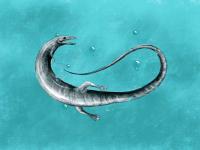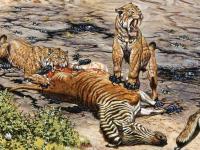Real Life Jurassic Park: Scientists Hope Discovery Will Lead to MAMMOTH-ELEPHANT Hybrid

AN ASTONISHING breakthrough has raised hopes that a real-life Ice Age Jurassic Park could be just around the corner.
Scientists working in the frozen tundra of Siberia have been able to successfully reintroduce a species not seen in the area for 1,000s of years to the area.
This week a yak calf born as part of the epic experiment took its first steps after the herd was introduced to northern Yakutia.
Russian scientists are aiming to recreate the Ice Age ecosystem of Siberia in Pleistocene Park.
It was a time when woolly mammoths roamed the area as well as many other prehistoric creatures long extinct.

But the scientists believe that by reintroducing these creatures, they will not only restore the landscape, but they also believe it could reverse global warming.
By sealing in leaking methane, they believe the new inhabitants of Siberia will prevent further melting of the permafrost.
A herd of bison are also expected to be moved to the park.
Over 20 square kilometres of land, the scientists hope one day they will be able to bring back the woolly mammoth.

A team at Harvard University are using DNA recovered from a long-extinct beast after it was found perfectly preserved in the Arctic ice 42,000 years after it died.
By combining this DNA with that of an elephant, the team will create a new hybrid creature and introduce it to Pleistocene Park.
Chief scientist George Church said: "Cold-resistant elephants would flatten the insulating snow and supporting trees in winter and favour the highly heat reflective grass in summer.
"They would also help capture new carbon by enhancing the photosynthetic capacity of the vegetation," he added.

The park is run by father and son team, Sergey and Nikita Zimov.
Explaining the importance of the work to introduce mammoths, Nikita said: "Arctic permafrost is melting. It will trigger catastrophic global warming.
"We're creating a northern Serengeti to stop that from happening.
"Here in the most remote corner of Siberia my father, Sergey Zimov, and I are reviving the Ice Age "Mammoth Steppe" ecosystem."

He added: "Natural grasslands, maintained by numerous grazing animals, have the capacity to both slow climate warming and prevent permafrost from melting".
It's been revealed to Daily Star Online that new mammoths could be cloned as soon as this year.
Is the planet headed for another mini Ice Age?
Source: www.dailystar.co.uk








